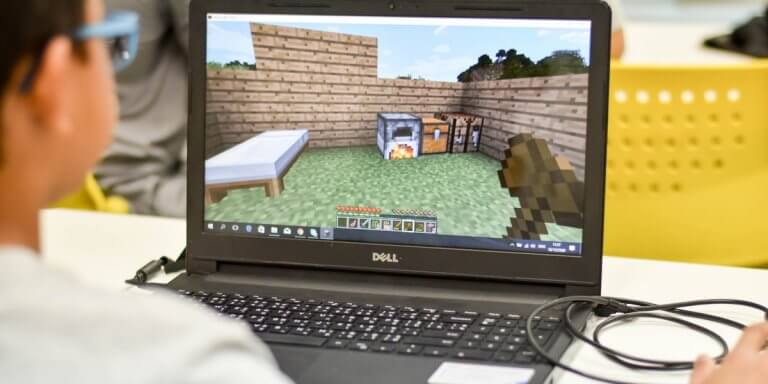
As we move towards a society that increasingly emphasises ‘soft skills’ and life-long learning, traditional education models are slowly being phased out.
Students today are expected to learn skills that go beyond memorisation – such as critical thinking and problem-solving – to help them adjust to competitive workplaces and uncertain futures fueled by new technologies.
When students attend college, they’re expected to be prepared for challenges in the classroom and adopt innovative, entrepreneurial mindsets. But if they haven’t been properly exposed to real-world scenarios in school, they would likely find it difficult to adapt.
This is where gamified learning – learning through video games – comes into play, as it helps students build critical skills and adopt a growth mindset.
Some parents may be quick to dismiss video games as frivolous or a waste of time, but when appropriately used, they can actually teach children more effectively than traditional learning methods.
The winning aspect of video games is that they are able to capture kids’ attention – a common problem faced by teachers and parents.
When their attention is focused on a game that is fun and engaging, learning goes on in the background, but that doesn’t make it any less important.
The truth is that certain games have enormous potential for learning outcomes in K-12 students. Children are learning more than we realise while they’re supposedly ‘playing’.
According to the Alice Banisio, who writes for the CIO, “Gamified learning is very helpful in cultivating a mindset where problem-solving becomes a fun activity, and failure is seen as a stepping stone.”
Minecraft is one popular example of gamified learning, a “game that allows players to construct 3D worlds out of textured cubes, but players must explore and gather resources in order to do so.”
The game, developed by Microsoft, became so popular that the company developed Minecraft: Education Edition for use in schools, with additional pedagogical tools and functionalities.
We started @GoConstructUK using Minecraft today to learn all about collaboration and construction! We built a target and even had a go at building our own designs! @dogtx @PlayCraftLearn @CWICWales @CITB_Wales @WRWConstruction @WillowtownPri #GoConstruct #MinecraftEDU pic.twitter.com/NlGDJa62s5
— WPS Year 4 Gwyrdd (@WPSYear4Green) April 5, 2019
Children can benefit from the learning outcomes they receive when they play these games, and how they develop important life skills. For example, the game encourages a modular approach to building children’s skillsets.
Banisio wrote, “When each new problem demands you to find and leverage different resources, materials and collaborations, you start to envisage those as pieces of a puzzle, for which there are multiple possible solutions. This is why LEGO and Minecraft have proven so popular and effective in those contexts, as their core design is in itself modular.”
In games like Minecraft, starting over creates a new opportunity rather than an ordeal. It teaches students how to stay calm and focused on solving a problem, instead of getting frustrated and giving up quickly.
This is an important skill that will remain valuable in a student’s academic and professional career.
Another skill important for the real world is the ability to have a growth mindset – a desirable trait among employers in innovative fields like technology and business.
Growth mindset refers to a learning theory developed by Dr Carol Dweck, based on the belief that students can improve their intelligence and ability through hard work and resilience.
It is in opposition of the fixed mindset, which is based on the belief that everyone is born with a set number of traits and skills.
The idea is that students should not focus solely on the final goal and learning is derived from the journey it takes for them to reach said goal.
According to TeachThought, “Progress and growth are acknowledged as valuable in the learning process. This is directly in line with our students’ relationship to games. They generally play games to win, of course, but mostly the point of playing a game is to play. They enjoy the experience of the game, and then there is an outcome.
“Yes, the final product is important, but how we get there is also of great importance. In any class, educators hope that students value the content, but also the very process of learning and thinking. We can spark excitement about learning by adopting a game mentality.”
When they play games, students learn that they will ultimately win some and lose some – even when they think they’ve done everything right.
In the real world, it’s often the case that we think we’ve done everything we’re supposed to have done but still haven’t achieved what we set out to do, but that doesn’t mean our efforts were for nothing.
Students at @NZ_A_C_Schools worked together to build a farm in #MinecraftEDU where they identified different roles within the community and what it takes to run a successful farm. 🚜🤠🐄 Keep up the great work! https://t.co/RKfaTQ1qVO @ChhayaNarayan @murraybu #edchatelim pic.twitter.com/txboTgYVXp
— Minecraft Education (@PlayCraftLearn) April 5, 2019
Games teach kids not to focus on failure, but instead on the process of solving a task, which can be rewarding in itself, teaching them how to value the knowledge acquired.
As games get even more immersive with the use of robotics and Artificial Intelligence (AI), there will be even more learning outcomes that students can benefit from.
Adopting them in the classroom and even at home, under supervision, is a great way for K-12 learners to build critical skills so they develop into capable adults who can adapt to different working environments, as well as life in general.
Liked this? Then you’ll love…
Problem-based learning in the classroom – yay or nay?
How is this green school in Bali breaking down the walls of learning?







